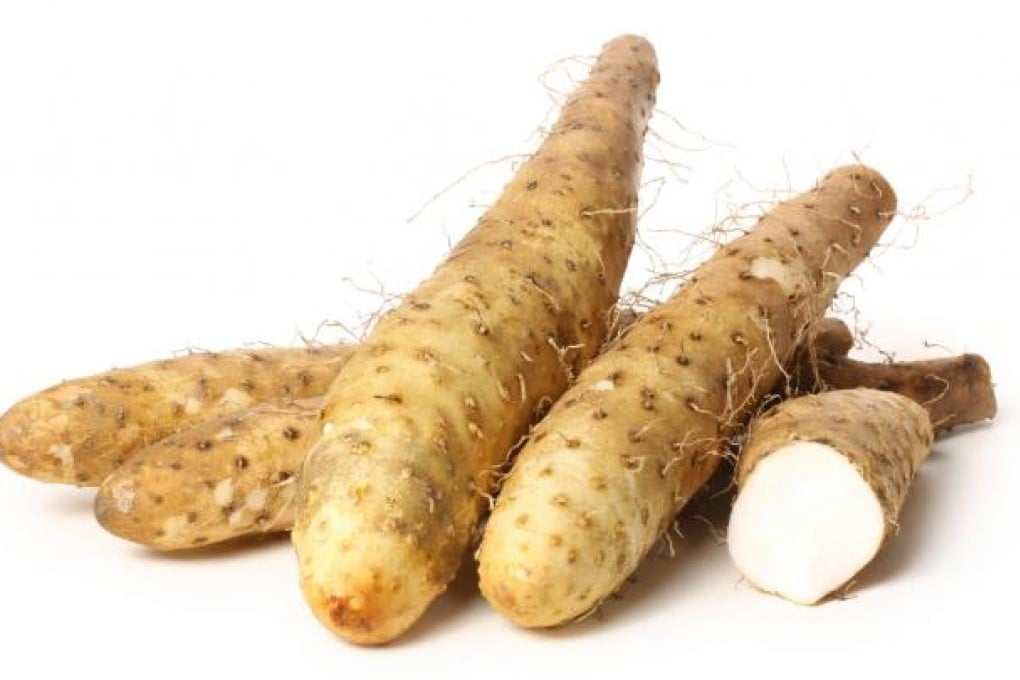
There's no getting around the fact that mountain yam is slimy - mucilaginous is another (unappetising) term. Although many would look on its sliminess as a drawback, gourmets appreciate it precisely for that texture.
In the same way that okra - another mucilaginous vegetable - is used to thicken the rich soup known as gumbo, mountain yam (known as shan yao or huai shan in Chinese, and nagaimo or yamaimo in Japanese) is used to bind liquid-y mixtures, to make them stickier. If you've eaten Japanese cold noodles, you've almost certainly tasted mountain yam: it's grated, then served with other accompaniments (such as wasabi and minced spring onion), which are then mixed into the dipping sauce; the mountain yam makes the sauce cling to the noodles better. It's also used to thicken okonomiyaki batter. The peeled fresh vegetable can be sliced and simmered into soups or stews, or battered and fried and eaten as tempura.
The mountain yam is long, with a thin skin that's dotted with "eyes" and rough hairs that are often trimmed off before the vegetable is sold. When the vegetable is peeled, sliced or grated, it releases oxalate crystals that can irritate the skin, so it should be soaked in water mixed with rice vinegar, to neutralise the irritants. Mountain yam is also sold in powdered form, although this isn't suitable to be mixed into dipping sauces. Dried mountain yam is used in traditional Chinese medicine to treat stomach and respiratory problems.
The slimy consistency of the yam is muted (or diluted) when it's cooked with a lot of other ingredients and a large amount of water to make soup. Peel it, slice it then put it in a pan with pork or chicken bones and meat, and ingredients such as lotus seeds, carrot and Chinese dates, cover with water, bring to a simmer then cover the pot with the lid and cook for several hours.
